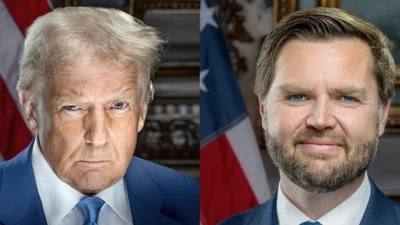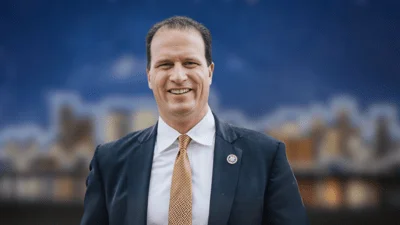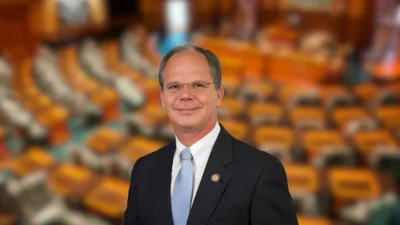The Congressional Record is a unique source of public documentation. It started in 1873, documenting nearly all the major and minor policies being discussed and debated.
“INTRODUCTION OF BANNING THE USE OF ELECTRONIC CIGARETTES ON AIRPLANES ACT OF 2017” mentioning the U.S. Dept. of Transportation was published in the Extensions of Remarks section on pages E853-E854 on June 20, 2017.
The Department handles nearly all infrastructure crisscrossing the country. Downsizing the Federal Government, a project aimed at lowering taxes and boosting federal efficiency, said the Department should be privatized to save money, reduce congestion and spur innovation.
The publication is reproduced in full below:
INTRODUCTION OF BANNING THE USE OF ELECTRONIC CIGARETTES ON AIRPLANES
ACT OF 2017
______
HON. ELEANOR HOLMES NORTON
of the district of columbia
in the house of representatives
Tuesday, June 20, 2017
Ms. NORTON. Mr. Speaker, I rise to introduce the Banning the Use of Electronic Cigarettes on Airplanes Act of 2017. The bill prohibits the use of electronic cigarettes and vaping devices on commercial airplanes by including use of these devices within the definition of smoking. Smoking tobacco products on commercial airplanes has been banned for years, but with the increase in use of electronic cigarettes and vaping devices in their place, it is necessary to update our laws to reflect this new nuisance and health risk on airplanes. The U.S. Department of Transportation (DOT) issued a final rule in March 2016 banning the use of these devices on airplanes, but Congress should make a permanent, statutory change to include the use of these devices within the definition of ``smoking.'' Last Congress, my bill received bipartisan support from the House Committee on Transportation and Infrastructure and was added as an amendment to the Federal Aviation Administration
(FAA) reauthorization bill, the Aviation Innovation, Reform, and Reauthorization (AIRR) Act. The amendment was also included in the Senate's long-term FAA reauthorization bill.
Electronic cigarette use has increased over the last decade with the increased education of the general public about the dangers and public health threats caused by traditional cigarettes to smokers and nonsmokers alike. For example, between 2010 and 2011, e-cigarette use among adults doubled. Researchers and public health experts have voiced concerns over the use of electronic cigarettes because there are still so many unknowns about the chemicals these devices can produce. The American Lung Association (ALA) has cited many concerns about the lack of regulation of e-cigarettes because they are being marketed to the public while the potential harm from secondhand e-cigarette emissions is unknown. ALA has identified two studies that show formaldehyde, acetaldehyde, benzene, tobacco-specific nitrosamines, and other harmful irritants coming from e-cigarette emissions. In addition, the temperature of an e-cigarette can affect how harmful the chemicals are, but with no configuration standards, it is too difficult to uniformly assess the health effects of smoking e-cigarettes. The Food and Drug Administration (FDA) issued a proposed rule in 2014 that would extend new regulatory authority to e-cigarettes by subjecting e-cigarettes to registration and product listing requirements, restrictions on marketing products prior to FDA review, and a prohibition on providing free samples as with traditional tobacco products.
It has been over 25 years since legislation was passed banning smoking on domestic flights in the United States. In the 1960s, the U.S. Surgeon General identified smoking as a cause of increased mortality and by 1986, the U.S. Surgeon General had named secondhand smoke a serious health risk. The National Academy of Sciences, in its report ``The Airliner Cabin Environment: Air Quality and Safety,'' recommended a ban on smoking on all domestic commercial flights. The Association of Flight Attendants can be credited with urging the smoking ban due to the negative health impacts flights attendants suffered working in cramped, closed-off spaces when a third or more passengers smoked in-flight. Congress used this information to include an amendment authored by then-Representative Dick Durbin (D-IL) in the Federal Aviation Act that made domestic flights of two hours or less smoke-free. By 1990, this smoking ban was extended to all domestic flights of six hours or less, and, in 2000, the Wendell H. Ford Aviation Investment and Reform Act made all flights to and from the United States smoke-free. All of this was done even in the face of the strong tobacco industry's opposition because of the undeniable health impacts of cigarettes and cigarette smoke. Many flyers do not remember a time without ``No Smoking'' signs located throughout a commercial airplane.
In 2016, DOT issued its final rule to prohibit the use of e-
cigarettes on U.S. airplanes. Legislation is necessary to make this update applicable to all airlines, and permanent. Under current FAA policy, battery-powered electronic cigarettes, vaporizers, vape pens, atomizers, and electronic nicotine systems are prohibited in checked baggage, and the FAA recommends that such devices only be carried in the aircraft cabins because of safety issues.
The current statutory smoking ban applies to the smoking of tobacco products on all scheduled passenger flights and on scheduled passenger flight segments on foreign air carriers in the U.S. and between the U.S. and foreign countries, unless a waiver is granted based on bilateral negotiations. The Banning the Use of Electronic Cigarettes on Airplanes Act of 2017 will amend the statutory definition of smoking in 49 U.S.C. 41706 to include the use of electronic cigarettes, defined as
``a device that delivers nicotine or other substances to a user of the device in the form of a vapor that is inhaled to simulate the experience of smoking.''
I urge my colleagues to join me in supporting this bill.
____________________








